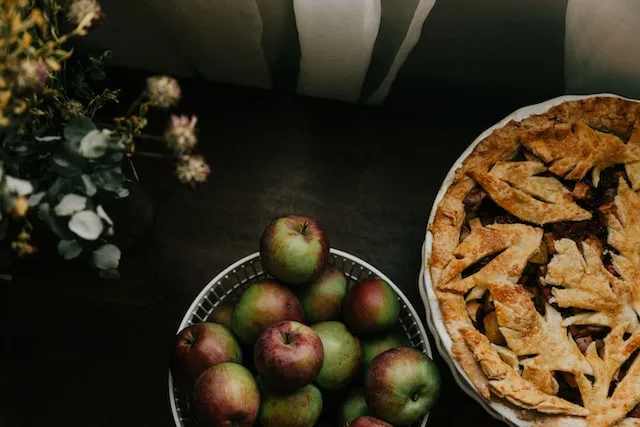Baking Cost Calculator
| Cost Factors | Description |
|---|---|
| Ingredients | Cost of all baking ingredients used (flour, sugar, eggs, butter, flavorings, etc.). |
| Packaging | Cost of packaging materials (boxes, bags, ribbons, labels) used for selling or presenting baked goods. |
| Labor | Cost of labor for bakers and staff involved in the baking process. |
| Utilities | Cost of utilities (electricity, gas, water) used for baking and running the bakery. |
| Equipment | Cost of baking equipment and machinery (ovens, mixers, etc.) and their maintenance. |
| Rent | Monthly cost of the bakery space or kitchen rental. |
| Insurance | Cost of insurance coverage for the bakery business. |
| Licenses and Permits | Cost of obtaining necessary licenses and permits to operate a bakery legally. |
| Marketing and Advertising | Cost of promotional activities and advertising to attract customers. |
| Miscellaneous Expenses | Other variable expenses, such as cleaning supplies, aprons, and small tools. |
FAQs
How do you calculate the cost of baking?
To calculate the cost of baking, you need to consider all the expenses involved in producing the baked goods, including the cost of ingredients, labor, overhead expenses, and any other direct and indirect costs. The total cost is the sum of all these expenses.
How do you calculate the cost of a homemade cake?
To calculate the cost of a homemade cake, add up the cost of all the ingredients used in the recipe, including flour, sugar, eggs, butter, etc. Then, consider any additional costs, such as packaging, electricity, and labor. Divide the total cost by the number of cakes produced to get the cost per cake.
What are 3 variable costs for a bakery?
Three variable costs for a bakery could be:
- Cost of ingredients (flour, sugar, eggs, etc.)
- Packaging materials (boxes, bags, ribbons, etc.)
- Utility costs (electricity, gas, water) which can vary based on production volume.
How do you calculate labor cost on baked goods?
To calculate labor cost on baked goods, you need to determine the total number of labor hours spent on producing the goods and multiply it by the labor rate (hourly wage) of the bakers or staff involved in the baking process.
What is a good profit margin for baked goods?
A good profit margin for baked goods can vary depending on factors like location, competition, and market conditions. Generally, a profit margin of 40-50% or higher is considered favorable for bakeries.
What is the formula for cost price?
The formula for cost price is: Cost Price = Total Production Cost + Overhead Expenses
What is the profit margin for cake?
The profit margin for cakes can vary depending on various factors, but a typical profit margin for cakes is around 30% to 50% or more, depending on the cost of ingredients, labor, and pricing strategy.
What is the formula for baking a cake?
The formula for baking a cake consists of specific measurements and ratios of ingredients, which can vary depending on the type of cake being baked. For example, a simple formula for a basic sponge cake might be:
Flour : Sugar : Eggs : Butter = 2 : 2 : 2 : 1
Is it cheaper to make box cake or from scratch?
In most cases, making a cake from scratch can be more expensive than using a boxed cake mix, as boxed mixes often contain lower-cost ingredients and are produced in bulk, making them more cost-effective.
What are the expenses of a bakery?
The expenses of a bakery include:
- Cost of ingredients
- Labor costs
- Rent and utilities
- Packaging materials
- Equipment and machinery maintenance
- Marketing and advertising expenses
- Licenses and permits
- Insurance
- Miscellaneous expenses.
What is an example of direct costs for a bakery?
An example of direct costs for a bakery would be the cost of ingredients and packaging materials used to produce a specific batch of baked goods.
What are examples of fixed costs for a bakery?
Examples of fixed costs for a bakery include:
- Rent for the bakery space
- Monthly loan payments (if any) for equipment
- Insurance premiums
- Salaries of permanent staff
- Depreciation of fixed assets.
Should labor be included in food cost?
Yes, labor should be included in food cost calculations as it directly contributes to the production of the food items.
What should labor cost be?
Labor costs in the food industry are typically expressed as a percentage of sales. The ideal labor cost percentage can vary depending on the type of establishment, but a common target is around 25% to 35% of total sales.
Do you include labor in food cost?
Yes, labor costs should be included in food cost calculations to get an accurate representation of the total cost of producing food items.
How much should I charge for a dozen cupcakes?
The price of a dozen cupcakes can vary depending on factors like ingredients used, labor cost, and overhead expenses. Generally, bakeries charge a price that covers their total production cost and desired profit margin.

GEG Calculators is a comprehensive online platform that offers a wide range of calculators to cater to various needs. With over 300 calculators covering finance, health, science, mathematics, and more, GEG Calculators provides users with accurate and convenient tools for everyday calculations. The website’s user-friendly interface ensures easy navigation and accessibility, making it suitable for people from all walks of life. Whether it’s financial planning, health assessments, or educational purposes, GEG Calculators has a calculator to suit every requirement. With its reliable and up-to-date calculations, GEG Calculators has become a go-to resource for individuals, professionals, and students seeking quick and precise results for their calculations.

